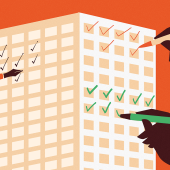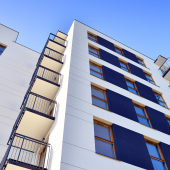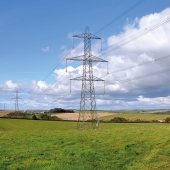Raising the alarm
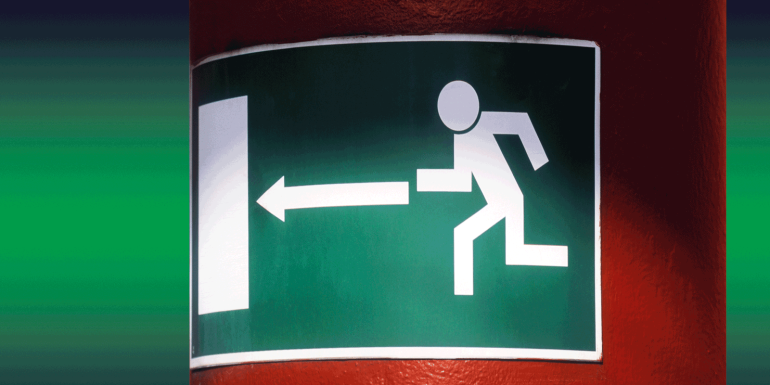
Fire Industry Association’s Will Lloyd and Robert Thilthorpe discuss what fire detection and warning systems should be in place for different types of building with David Adams.
‘‘Fire safety isn’t new – we’ve been doing it for centuries,’’ says Will Lloyd, one of the technical managers at the Fire Industry Association (FIA). “We are forever tweaking and improving standards. It will always be a work in progress.”
This is true, but the process has accelerated in recent years, following the Grenfell Tower fire in 2017 and the publication of Dame Judith Hackitt’s independent review of fire safety management in England and Wales in 2018. We have seen new legislation: the Fire Safety Act 2021 now outlines the duties of “accountable (or responsible)” persons who must manage fire risks in buildings in England and Wales; while the Building Safety Act 2022 applies to new or existing high-rise, occupied buildings – defined as buildings of seven or more storeys, or at least 18 metres high, and containing at least two residential units. The design, refurbishment and construction requirements also apply to care homes and hospitals meeting the same height threshold.
In addition, the Building Safety Regulator (BSR) is now the building control authority for occupied high-rise buildings in England and it oversees the competent persons schemes covering contractors working on these buildings and enforces building regulations.
Naturally, these changes have significant implications for fire strategies within many different types of buildings. So, what do accountable or responsible persons such as property or building managers and the competent built environment industry professionals designing, building or working in these buildings need to know about the rules for the design and maintenance of fire detection and alarm systems?
New standards and codes
Every building is different, but the starting points are Approved Document B in the Building Regulations (fire safety); the BS 9999 standards (including BS 9991, the code of practice for fire safety in design, management and use of buildings); and the BS 5839 standards (BS 5839-1:2017, the code of practice for design, installation, commissioning and maintenance of fire detection and alarm systems in non-domestic premises, and BS 5839-6:2019, the equivalent code for domestic premises).
In addition, BS 5266-1:2016 forms a code of practice for emergency lighting, which is required in multistorey residential buildings, hospitals, schools, offices, hotels and other larger buildings. Minimum requirements include emergency exit luminaires above exits and signage leading to fire exits, including signs revealing every change in direction along an escape route. Emergency lighting should help guide people past trip hazards, stairways and steps; it should also reveal locations of first aid equipment, fire alarm triggers and equipment or information that may be used by firefighters. In residential buildings higher than 18m, luminescent emergency signage must guide firefighters to the flats on each floor.
BS 5839-6:2019 code of practice
In theory, in the case of purpose-built blocks of flats, compartmentation between flats should ensure that fire is contained within them. If this system works, a ‘stay put’ policy will be in place – this is whereby most residents are advised to stay in their homes if there is a fire elsewhere in the building. Indeed, as the text of BS 5839-6:2019 notes, the code of practice “does not provide recommendations for fire detection systems that incorporate detectors in … communal areas or ancillary accommodation (eg plant rooms) within purpose-built flats. Such systems are normally undesirable and can even lead to risk to occupants” – for example, if alarms encourage them to leave the relative safety of their flats.
The code goes on to state that if provision of fire detection and fire alarm systems in those areas can be justified then recommendations in BS 9991 and BS 5839-1 can be followed. It notes that fire detection in blocks of flats is usually intended to operate smoke control systems, rather than warn residents of a fire. Guidance on evacuation strategies and warning systems for purpose-built blocks of flats is included within BS 9991, Approved Document B and the LGA guide Fire Safety in Purpose-Built Blocks of Flats. Guidance on fire detection and fire alarm systems used in sheltered or supported housing is provided in the National Fire Chiefs Council document Fire Safety in Specialised Housing.
Post-Grenfell, some temporary fire alarm systems have been installed in blocks of flats with external cladding that does not satisfy building regulations in relation to fire spread. BS 5839-6:2019 makes it clear that these systems are intended to be removed once the cladding has been removed. Communal fire alarms may be used in houses that have been converted into self-contained flats, but this may vary in accordance with the limits of compartmentation within these buildings, access to escape routes and legislation in different parts of the UK. The code refers developers, building owners or responsible persons to the Housing Act 2004 for England and Wales, the Housing (Scotland) Act 2006 and the Housing (Northern Ireland) Order 1992.
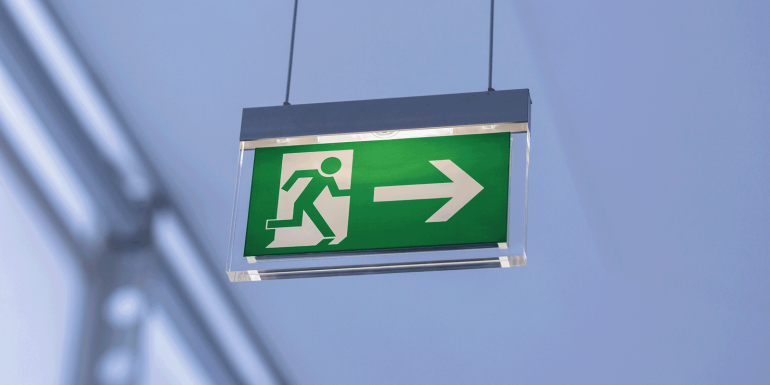
Fire-safety measures
Fire alarm and detection systems must operate in a co-ordinated way with other fire safety measures, including passive protection and fire stopping. Lloyd points out that the ‘stay put’ policy for purpose-built blocks of flats does save lives if fire risks have been assessed correctly, the right equipment is in place and the building has been constructed in accordance with best practice fire engineering, meaning fire does not spread through the building. “’Stay put’ works, but it relies on the methods used to make it work,” says Lloyd. “You have to manage your building correctly.”
This underlines the crucial importance of competence among contractors working on or in a building during construction, installation of fire safety measures and other services, and then throughout the working life of the building.
In discussing ‘stay put’, it is important to mention the Evacuation Alert System BS 8629:2019, which is a “code of practice for the design, installation, commissioning and maintenance of evacuation alert systems for use by fire and rescue services in buildings containing flats”. Chartered electronics engineer Angus Stone describes this as “not a fire alarm system,” but an alert system used by the fire service that their response needs to change “if a fire in a building designed for ‘stay put’ is developing to the point where residents in the building are becoming potentially at risk from fire and need to evacuate”. The decision will be made by the fire service and the evacuation is done manually.
Types of alarm systems
The BSI provides some guidance, in Annex A of the BS 5839-1:2017 standard, on appropriate categories of fire detection and alarm systems for use in different types of building, although its text states it is “not intended to constitute recommendations, but … information on custom and practice, and on the conventional interpretation of fire safety legislation”.
L1 category
The L1 category is a Maximum Life Protection Automated Fire Alarm system, incorporating detectors/alarms in any part of a building where a fire could start, including larger cupboards and roof spaces. This sort of system is often used in:
- residential care facilities
- houses in multiple occupation
- hotels or hostels; and
- hospitals (in some areas of these buildings British Standards offers additional guidance – see documents HTM 05-03 Part B [N1] for England and Wales, or SHTM 82 [N26] for Scotland).
“When it comes to categories of system, I always come back to, ‘What is the objective?’” says Lloyd. “The objective of L1 is to offer the earliest possible warning of fire, so as to achieve the longest available time for escape. This is why detection is placed throughout the building.”
L2 category
An L2 system is an Additional Life Protection Automated Fire Alarm system, incorporating fire and smoke alarms in high-risk rooms and on escape routes to fire exits to provide early warnings of fire and smoke in these areas. L2 systems are also often used in pubs that contain residential accommodation and in covered shopping centres.
L3 category
Annex A notes that hotels, hostels, student accommodation and houses in multiple occupation may use an L3 category system in bedroom areas. L3 Standard Life Protection Automated Fire Alarm systems require alarms along escape routes leading to fire exits, but do not usually include alarms close to high-risk sources of ignition.
“In an L3 system the objective is to give a warning at an early enough stage to enable all occupants, other than possibly those in the room of fire origin, to escape before escape routes are impassable owing to fire, smoke or toxic gases,” says Lloyd. Those in the room of fire origin should evacuate, operating a manual call point to warn other occupants.
L4 category
Non-residential buildings where larger groups of people might assemble, such as cinemas, theatres, nightclubs, museums, galleries, leisure centres or casinos, may use systems in categories ranging from L1, for larger and more complex buildings, through L2 and L3 to L4: Modest Life Protection Automated Fire Alarm systems. Here, alarms are placed mainly along escape routes such as hallways and stairwells to warn of the presence of smoke within these areas. These systems are generally used in lower risk environments from where people should be able to escape quickly in the event of fire.
Category M
Smaller buildings of the types listed above, along with some offices, shops, factories, warehouses, restaurants or large pubs without residential accommodation, might use Category M: Manual Fire Alarm systems, where alarms are operated manually when a fire is discovered. Some workplaces and many schools may use systems based on a combination of Category M and Category P1 or P2 systems.
Category P1/P2
Category P1 – Maximum Property Protection Automated Fire Alarm systems provide additional safety measures, often in operationally critical locations, such as computer server rooms, alongside fire and smoke detectors installed throughout the building. Category P2 Minimum Property Protection Automated Fire Alarm systems include fire and smoke detectors in the most high-risk areas. P1 and P2 systems are sometimes installed to satisfy insurance requirements, or to protect against specific potential fire hazards.
Category M/l5
There are also some circumstances in which a system may be based in part on Category M and in part on a Category L5 – Localised Life Protection Automated Fire Alarm system, in which additional fire detection equipment may be installed in parts of a building containing specific fire hazards. Examples might include areas in an industrial premises where higher risk processes like welding are carried out. Other buildings where the M/L5 combination might be used include prisons, airport terminals or buildings where the spread of fire might cut off potential escape routes (if exiting from one room is only possible via a second room, for example).
Domestic fire alarm categories
Finally, there are the three domestic fire alarm categories: LD1 – Maximum Life Protection (detectors/alarms in all areas of the building except those with very low ignition risk, such as bathrooms), LD2 – Additional Life Protection (detectors/alarms installed in parts of the building that might be used as escape routes and in areas presenting a higher risk of fire) and LD3 – Standard Life Protection (detectors/alarms placed in potential escape routes but do not need to be near high-risk ignition sources). It’s also important to remember that requirements differ in different parts of the UK. In Scotland and England, for example, fire alarms in every home must be interlinked, so if one sounds they will all sound together.
Be vigilant
Robert Thilthorpe, another of the technical managers at the FIA, stresses the need for the designated responsible person for a building to monitor changes in fire safety regulations, as well as the state of the building itself. But he also highlights the need for greater understanding of fire safety issues among the people working or living in a building.
He points out that businesses or other organisations that allow more employees to work from home some of the time may need to consider changing aspects of fire alarm and detection systems, because with fewer people working in the building it is less likely that someone will spot a fire. “The best fire detection system is a person,” he notes.
Finally, alarm and detection systems, plus other fire suppression measures, must support firefighters who may need to attend the property. As a minimum, says Lloyd, “you need to check that everything there for the fire and rescue service is working.” This might include water supplies, hose reels, firefighter lifts and fire suppression equipment.
Thilthorpe advises building owners and managers to consult their local fire brigade: “They’ve got officers who can come round and talk about what [people in the building] should be doing or considering.”
Ultimately, responsibility for ensuring safety from fire risks is shared among anyone who contributes to the design, installation and maintenance of detection and alarm systems, and other fire safety measures. Everyone needs to play their part. If they do, Lloyd suggests, there are reasons to be optimistic about the outcome. “If you do things correctly,” he says, “people will be safe.”
For more, visit fia.uk.com
For more on Evacuation Alert Systems go to bit.ly/Fixfire_evacuationsystems
Image credit | iStock | Getty


